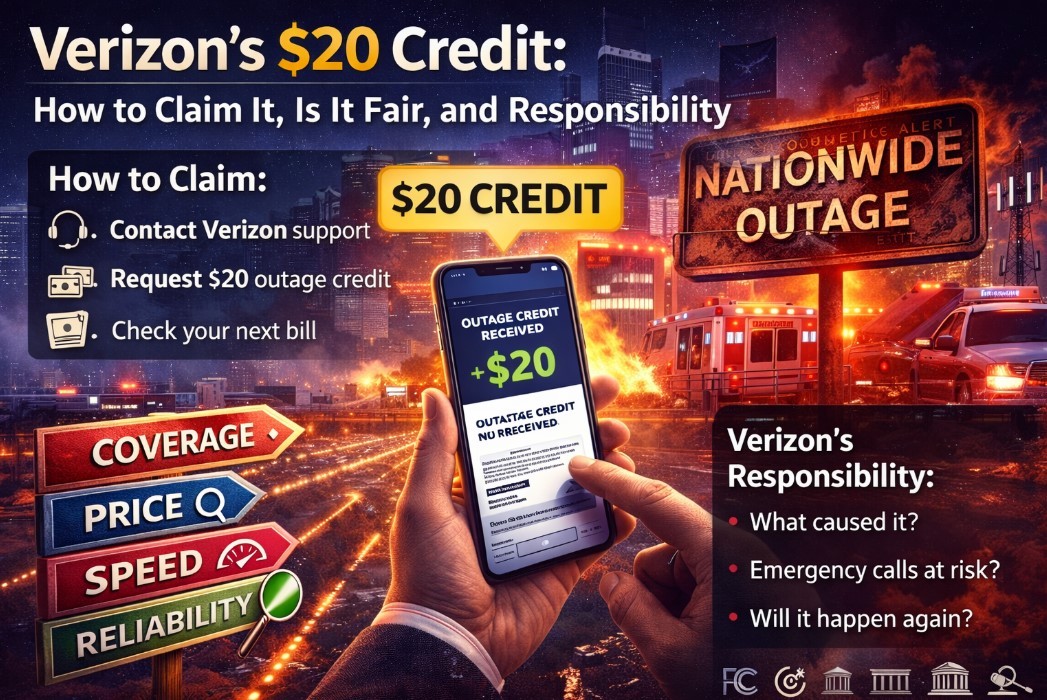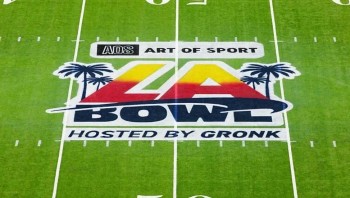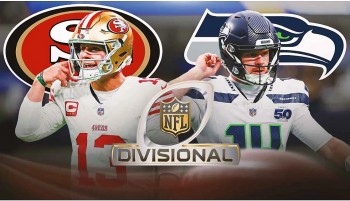What Are Products and Brands 'Made in USA' - Latest Regulations
 Top 35 Famous US Brands, But No Longer Made in America Top 35 Famous US Brands, But No Longer Made in America |
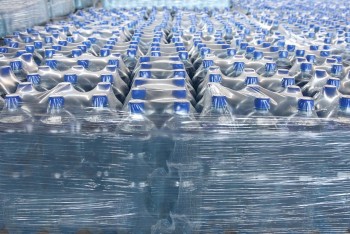 Top 9 Most Popular Water Bottle Brands In The US Top 9 Most Popular Water Bottle Brands In The US |
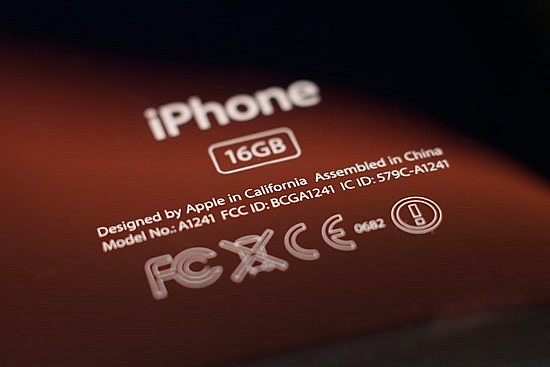 |
| The back of Apple's iPhone products states the origin "Designed by Apple in California, Assembled in China” |
| Table of Contents |
Made in USA: Overview
A wide range of consumer products, such as watches, brushes, flashlights, jewelry, lighters, knives, markers, padlocks, pens, razors, and scissors, are still manufactured in the US. These products are commonly available on Amazon and other websites, as well as in conventional brick-and-mortar retailers like Ace, Home Depot, Kroger, Staples, Target, Walgreens, and Wal-Mart.
The coronavirus pandemic's lessons for supply chains have increased demand for "Made in USA" goods. Actually, according to the Alliance of American Manufacturing (AAM), 75% of American consumers would rather buy products that are made in the country. But a third claim that when they shop, they hardly ever or never see American-made goods.
Although there have been laws governing American-made goods since 1933, reshoring—the practice of returning offshored labor to the United States—is becoming more and more common.
Since new rules have just been passed, it's critical to understand all specifications when purchasing goods made in the United States.
According to Federal Trade Commission (FTC) regulations, a product that wants to be labeled "made in USA" must be made in the United States, specifically all important details and manufacturing steps of this product are included. Must be of American origin.
Therefore, products must contain no or a negligible proportion of foreign components. Final finishing or processing must take place in the United States.
Evaluating "made in USA" standards also carefully considers cost factors, including materials and labor, because in some cases, overseas processing costs only account for a small portion of costs but are accounts for the majority of the manufacturing process.
However, the US also has many overlapping regulations on this issue, such as US procurement laws for government procurement, a product only needs to have more than 50% of components made in the US to qualify as "made in the USA".
Textile, wool, and fur products must state the proportion of their materials sourced domestically, as required by the Textile Fiber Products Identification Act and the Wool Products Labeling Act. Similar requirements for automobiles are found in the American Automobile Labeling Act.
The different definitions of "American-made products" found in these regulations can make it difficult to comply with the various new acts. The goal of this guide is to make sense of these distinctions so that each act is simpler to comprehend and adhere to.
Some products do not qualify for the "Made in USA" label but are assembled in the US (or contain materials that partly originate in the US, or are designed by a company in the US, etc.), then the manufacturer must use phrases such as "assembled in...", "designed by...", "packaged in...", "packaged by..." in the product label.
A typical example is Apple's iPhone product, with the words "Designed by Apple in California. Assembled in China”.
Read more: Top 20+ Best Luggage Brands That Really Made in USA
| To be labeled "Made in USA," a product or good must be manufactured entirely (or nearly entirely) in the United States, according to the FTC. For goods to be considered wholly or nearly entirely manufactured in the United States, the FTC will look at the final point of processing (or assembly), as well as factors like processing costs and localization rates. and even more of it. |
Made in USA Claims
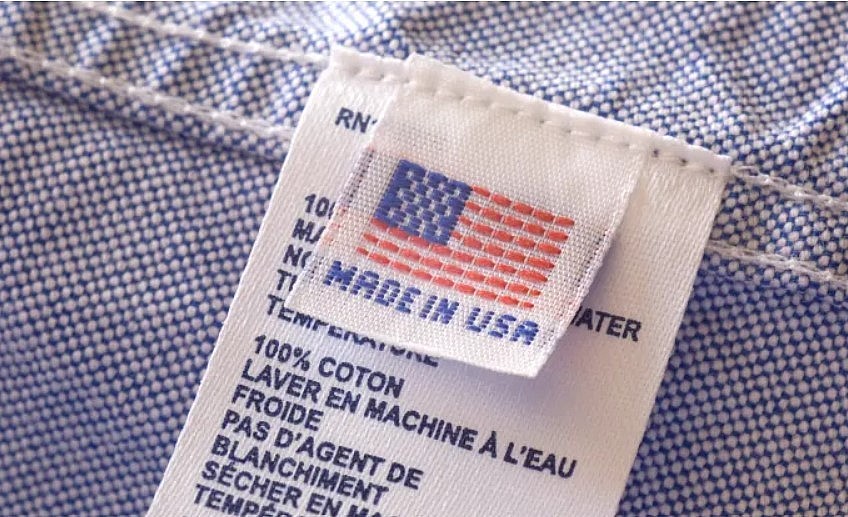 |
| ‘Made in USA’ Products |
Many companies label their products "Made in USA" to demonstrate their commitment to domestic production.
To promote consumer confidence and transparency, the Federal Trade Commission (FTC) regulates "Made in USA" claims under Section 5 of the Federal Trade Commission Act, which prohibits "unfair or deceptive acts or practices."
The FTC issued an Enforcement Policy Statement in December 1997 outlining its standards and enforcement practices for "Made in USA" claims. Companies may make qualified or unqualified "Made in USA" claims, according to the statement. A company must have a reasonable basis for making a "Made in USA" claim, and the claim must be truthful and substantiated. An unqualified claim (e.g., "Made in USA") means that "all or virtually all" significant parts and processes used to make the products are made in the United States, and final assembly and processing takes place in the United States. Foreign content or production is insignificant.
Qualified claims, on the other hand (for example, "65 percent U.S. content" or "made of imported and U.S. materials") describe the extent, amount, or type of domestic content or production of a product.
According to the Federal Trade Commission (FTC), "in order to be effective, any qualifications or disclosures should be sufficiently clear, prominent, and understandable to prevent deception." Reliable companies should be able to provide detailed information about their products' origins.
Read more: Why are American Products 'Made in China'?
What are the requirements for a product to be labeled as “Made in the USA”?
As per the guidelines set forth by the Federal Trade Commission (FTC), a product can be promoted as "Made in the USA" if the labor and materials used in it are sourced from within the country, either entirely or almost entirely. This standard permits some latitude in at least two circumstances, despite its overall strictness.
First, the FTC standard permits the product to be labeled as "Made in the USA" if it is entirely made in the United States, mostly using domestic materials and with very little foreign content.
Second, by revealing, for instance, that the product is made in the United States using both domestic and foreign materials, the advertiser can "qualify" or soften its Made in the USA claim.
However, please take note of the following if you are a California manufacturer or if you wish to advertise your goods in California under the Made in USA label:
A law that forbids claiming a product is "Made-in-the-USA" if any component is sourced outside of the country was passed in California. But in September 2015, this stringent requirement was changed, and it became operative in January 2016. Although it won't be totally consistent, the revised standard will more closely resemble the FTC rule. The highest standard for "Made in America" claims used to be set by California law, which mandated that almost all of a product's content be domestically sourced in the country. California's strict U.S.-origin labeling requirements are loosened by the new law. The new standard allows products sold in California to be marked as “Made in USA” or “Made in America,” when a small part of the product’s contents are foreign-origin; as long as the foreign materials or parts do not exceed five percent of the final wholesale value of the merchandise; If the manufacturer of the merchandise can show that it cannot obtain the materials or parts in the United States, then the total foreign content cannot exceed 10 percent of the final wholesale value of the item. Products offered for resale outside of California are exempt from the law.
Read more: Top 20 Best Toy Brands Really Made in USA - Largest Toy American Companies
American Acts For 'Made in USA'
USDA Proposes New Requirements for the “Product of USA” Label Claim
A proposed rule with additional regulatory requirements was released on March 2023 by the U.S. Department of Agriculture (USDA) in an effort to better align consumer understanding of the meaning of the voluntary "Product of USA" label claim. The voluntary "Product of USA" or "Made in the USA" label claim may only be applied to meat, poultry, and egg products if the animals used to produce them were born, raised, killed, and processed in the US, according to the proposed rule.
The announcement made today fulfills a pledge made in the Biden-Harris Administration's Action Plan for a Fairer, More Competitive, and More Resilient Meat and Poultry Supply Chain as well as one of the main objectives of President Biden's Executive Order on Promoting Competition in the American Economy. This proposed change would prevent consumer confusion and help ensure that consumers understand the origins of their food. It would also increase clarity and transparency.
Buy American Act
The Buy American Act of 1933 (BAA), as codified in Title 41 United States Code (U.S.C.) Chapter 83 and Federal Acquisition Regulation (FAR) Part 25, particularly Subparts 25.1 and 25.2, requires the use of "domestic construction materials" or "domestic end products" in all Federal Government-funded projects and public works.
Whatever is referred to as "construction material" is defined as "an article, material, or supply brought to the construction site by a contractor or subcontractor for incorporation into the building or work." An "end product" is defined as "those articles, materials, and supplies that are to be acquired for public use."
To qualify as domestic under this act, a construction material or end product must be:
A) unmanufactured and mined or produced in the United States; or
B) manufactured in the United States and
a. the cost of the components mined, produced, or manufactured in the United States exceeds 50 percent of the cost of all components; or
b. the construction material is a commercial-off-the-shelf (COTS) item
While the BAA does not define "manufactured," a review of other legislation, code, and guidance on domestically sourced materials reveals that the term is commonly understood to mean a material or product that has been a) processed into a specific form and shape and/or b) combined with other raw materials to create a material with different properties than the individual raw materials. The Bureau of American Agriculture (BAA) defines a "component" in the sense of "an article, material, or supply incorporated directly into an end product or construction material."
In terms of the Buy American Act, an end product or construction material is compliant with the Act's domestic requirements if the two-part test outlined above is met.
Buy America
The Buy American Act should not be confused with the Buy America provision of the Surface Transportation Assistance Act of 1982, which is geared toward the transportation industry (rail, highway, etc.).
The Act's requirements, which apply to projects funded by the United States Department of Transportation (DOT), are codified in 23 U.S.C. 313 for the Federal Highway Administration (FHWA) and 49 U.S.C. 5323 (j) for the Federal Transit Administration (FTA). The FHWA is further codified in the Code of Federal Regulations (CFR) at 23 C.F.R. 635.410, and the FTA is codified at 49 C.F.R. 661.
The Buy America Act requires that "all iron, steel, and manufactured products used in the project are produced in the United States" for DOT-funded projects. To be considered manufactured in the United States, "all of the manufacturing processes for the product must take place in the United States; and all of the product's components must be of U.S. origin." "A component is considered to be of US origin if it is manufactured in the US, regardless of the origin of its subcomponents."
A component, according to the Act, is "any article, material, or supply, whether manufactured or unmanufactured, that is directly incorporated into the end product at the final assembly location."
Under this Act, the term "manufacturing process" is defined to mean "the application of processes to alter the form or function of materials or of elements of the product in a manner adding value and transforming those materials or elements so that they represent a new end product functionally different from that which would result from mere assembly of the elements or materials."
To summarize the Buy America provision, an end product is compliant with the Act if it is manufactured in the United States from components manufactured in the United States, regardless of raw material source.
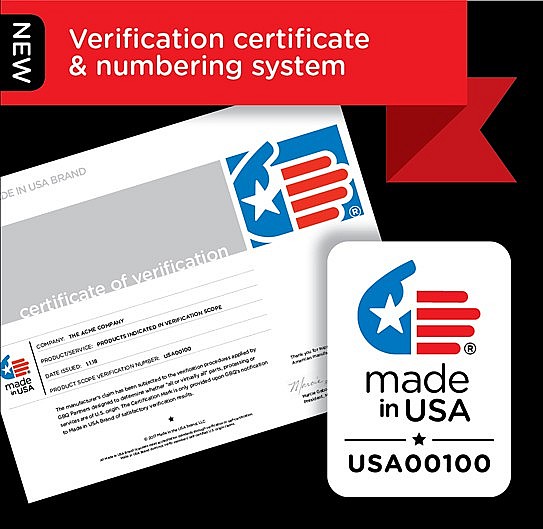 |
| Made in USA verification program |
American Recovery and Reinvestment Act - Buy American Provision
The American Recovery and Reinvestment Act (ARRA), also known as Public Law 111-5, is also known as The Recovery Act or The Stimulus. In response to the Great Recession, the Act was enacted in 2009 with the goal of saving and creating jobs, as well as providing temporary relief programs through investments in infrastructure, education, health, and renewable energy.
Section 1605 of the ARRA includes a Buy American provision that applies to ARRA-funded projects. According to the provisions of this section, "none of the funds appropriated or otherwise made available by this Act may be used for a project for the construction, alteration, maintenance, or repair of a public building or public work unless all of the iron, steel, and manufactured goods used in the project are produced in the United States." This provision is included in both FARs. Phone: 800.945.4316 Fax: 724.838.1544 [email protected] Web address: www.gibsonstainless.com 4 Understanding the Regulations for American-Made Products 25.6 and 2 C.F.R. 176 Subpart B, which state that iron, steel, and manufactured goods used as construction material in an ARRA-funded project must be:
A) unmanufactured and mined or produced in the United States; or
B) manufactured in the U.S. This specifically means that, while the origin of the elements of the iron or steel is not restricted, all manufacturing processes of the iron or steel must take place in the United States, with the exception of metallurgical processes involving the refinement of steel additives.
FAQs
What Does "Made in the USA" Mean?
"Made in the USA." It's a label that implies job security for American workers while carrying an implicit guarantee of quality. It's a fact that most consumers are unaware of how complicated the regulations are for attaching that label.
A product labeled and advertised as "Made in the USA" must be made entirely or almost entirely in the United States, according to the Federal Trade Commission's (FTC) official definition of the term.
Is There a Difference Between 'Made in the USA' and 'Made in America'?
A marketing expert might draw attention to the fact that "Made in America" has some leeway. North America also includes Canada and Mexico.
Does the U.S. Government 'Buy American?'
Yes. Federal government organizations are mandated to purchase American goods whenever feasible. During his first week in office, President Joe Biden issued an executive order to that effect.
How Can I Tell Where Something Was Made If It's Not Tagged "Made in the USA"?
Manufacturers and retailers are required by a patchwork of laws that date back to 1930 to identify the country of origin of their products. A vehicle manufacturing-specific law mandates the disclosure of all nations contributing 15% or more of the vehicle's parts.
Why the Label Matters?
A genuine "Made in the USA" label aims to instill a sense of patriotism, suggest superior quality, and guarantee well-paying jobs for Americans.
There is a great deal of emotion and sensitivity surrounding this subject because of the protracted downfall of the American manufacturing sector and the negative consequences of outsourcing manufacturing jobs to third-world nations.
Labels that state "Made in China," among other nations, can arouse sentiments of dissatisfaction regarding the deterioration of the American working class, lowered standards for quality and safety, inadequate working conditions, and corporate greed.
Do all products that are made in the USA have to be labeled?
Labeling with the country of origin is not required if the U.S. Custom Service finds that the good is not of foreign origin (i.e., it underwent its last significant transformation in the United States). With the exception of wool, textile, and automotive products, the FTC does not require the country of origin for goods manufactured in the United States.
What products does this apply to?
With the exception of goods that are protected by other laws, this is applicable to all goods advertised or sold in the US. If the product is being exported, you must ensure compliance by reviewing the laws or regulations of the country of origin or the country into which the product is being imported.
How do I substantiate my claim?
A producer or advertiser who asserts that "all or virtually all" of the product is made in the USA must provide competent and trustworthy proof for this assertion. It should analyze the cost of goods sold or the inventory costs of finished goods when coming to this conclusion. The entire cost of manufacturing supplies, direct labor costs, and manufacturing overhead are the only expenses that can be incurred.
If American suppliers provide information about domestic content in good faith, it is reliable; nevertheless, manufacturers should request specific information about U.S. content from suppliers. Manufacturers should, once more, trace back far enough in the process to be fairly certain that no appreciable foreign content has been added.
 Why Are There Many Mass Shootings in the USA? Why Are There Many Mass Shootings in the USA? The US has a large number of guns that are readily available for purchase, and this is thought to be the primary cause of the ... |
 Top 10 Best Golf Courses for Every State in the USA Today Top 10 Best Golf Courses for Every State in the USA Today These golf courses are the best to try out in every state of America today. |
 Facts: Largest and Smallest State by Population in the USA (2024 Update) Facts: Largest and Smallest State by Population in the USA (2024 Update) As of January 2024, the United States (US), comprising 50 states and other dependent areas, has the largest population in the world, with 339,996,563 individuals. ... |
 Top 10 Oldest Banks In The U.S That Are Still in Operation Top 10 Oldest Banks In The U.S That Are Still in Operation Being one of the countries with the most powerful banks in the world, the US is home to lots of old banks. Check out their ... |




